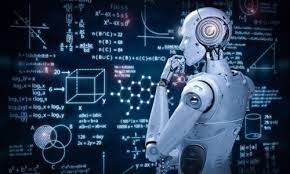
Revolutionizing Artificial Intelligence and Machine Literacy
I. Introduction
Artificial Intelligence( AI) and Machine Literacy ML) have become keystones of the ultramodern technological geography. AI refers to the simulation of human intelligence in machines that are programmed to think and learn like humans. ML, a subset of AI, involves the use of algorithms and statistical models to enable devices to improve their performance on a specific task through experience. In today’s fast-paced world, these technologies are not just buzzwords but essential components shaping our future. They have profound implications across various sectors, revolutionizing industries and enhancing our daily lives.
II. Historical Overview
The roots of AI trace back to ancient times, but the term ‘Artificial Intelligence’ was coined in the mid-20th century. Early AI concepts were rudimentary, paving the way for developing the sophisticated algorithms we see today. Similarly, ML has a rich history, with key milestones including the introduction of neural networks and the formulation of foundational algorithms. Understanding this historical context is crucial to appreciate the rapid progress made in recent decades.
III. Understanding Artificial Intelligence
AI encompasses both Narrow AI, designed for specific tasks, and General AI, which possesses human-like cognitive abilities. Machine Learning, a subset of AI, relies on algorithms that allow systems to learn from data and improve their performance over time. Supervised learning involves training models with labeled data, while unsupervised learning finds patterns in unlabeled data. Reinforcement learning focuses on making sequences of decisions to maximize rewards. Deep Learning, a subset of ML, employs neural networks with multiple layers to process complex data, enabling breakthroughs in areas like image and speech recognition.
IV. Applications of AI and Machine Learning
In healthcare, AI aids in diagnosing diseases, personalizing treatments, and managing patient data efficiently. In the business realm, automation streamlines workflows, while data analysis provides valuable insights. Transportation benefits from AI through autonomous vehicles and traffic management systems, enhancing safety and efficiency. Finance relies on AI for fraud detection, algorithmic trading, and improving customer service. Entertainment industries leverage AI for content creation, recommendation systems, and immersive gaming experiences, enhancing user engagement.
V. Ethical Considerations
While AI offers immense potential, ethical considerations are paramount. Bias in AI algorithms can lead to unfair outcomes, impacting marginalized communities disproportionately. Privacy concerns arise from AI-powered surveillance technologies and data collection practices. Regulations and ethical guidelines are essential to ensure responsible development, addressing these concerns and promoting transparency and accountability.
VI. Challenges and Limitations
Current AI and ML models have limitations, including their inability to handle dynamic, real-world environments and evolving datasets. Challenges also arise in addressing cybersecurity threats associated with AI systems. Overcoming these limitations and challenges is crucial for the widespread adoption of AI technologies, prompting ongoing research and innovation in the field.
VII. Future Trends and Possibilities
The future of AI and ML holds exciting prospects. Natural Language Processing (NLP) advancements enable machines to understand and respond to human language more effectively, fostering seamless communication. Quantum Computing, with its immense computational power, could revolutionize AI by solving complex problems exponentially faster. Moreover, AI’s role in space exploration and scientific research is expanding, aiding in data analysis and simulations, and pushing the boundaries of human knowledge.
VIII. Conclusion
In conclusion, AI and Machine Learning are transformative forces reshaping society, business, and technology. Their potential is vast, offering solutions to complex problems and enhancing various aspects of our lives. As we move forward, it is crucial to continue ethical practices, invest in research, and collaborate across disciplines to harness the full potential of AI and Machine Learning, ensuring a future where these technologies benefit humanity.
